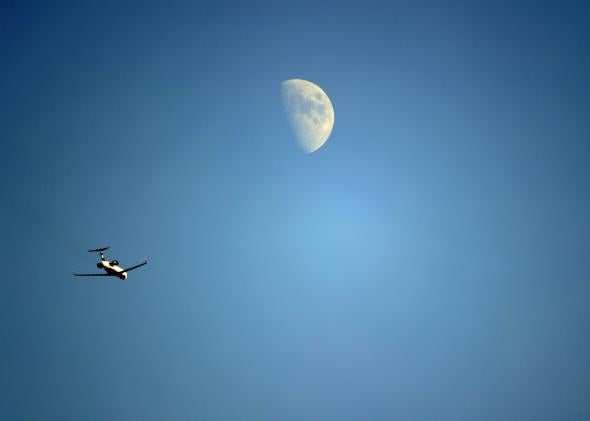When a female friend and I took a road trip through the American West last year, we did not deliberately chart a course through several states—Idaho, Montana, Wyoming, Colorado, and Utah—that are known for their surplus of male residents. But we weren’t exactly complaining, either. We’d seen the unintentionally erotic 1990s Chevrolet commercials. If the ratio worked in our advantage, we weren’t going to argue with the math. Then we met Tim. A grizzled, ponytailed rodeo rider, Tim noticed us the second we walked into the Cheyenne, Wyo., bar. Because we were women, entering a Cheyenne, Wyo., bar. Tim bought us Buds. He told us that he’d dismantled bombs as a Navy Seal and mounted bulls as a rodeo rider, but that women were the one problem he couldn’t figure out. Then he asked if we were lesbians and proposed a threesome. When we declined, he said he’d settle for having sex with us one at a time. We agreed.
Just kidding—we got the hell out of there as quickly as possible, whereupon a man in a decrepit sports car sighted us, stepped on the brakes, and offered us a ride, and also drugs. We had never been so in demand or so turned off.
In the United States, residents between the ages of 15 to 64 split evenly along gender lines. But men and women are not distributed equitably across the country—men are overrepresented in Alaska and North Dakota, for example, while women reign in Delaware and Maryland. Group dating service The Dating Ring hopes to begin to bridge that geographical divide by crowdfunding the transportation of single women from New York City (where they outnumber men) to San Francisco (which has the opposite problem). If you donate to the company’s Crowdtilt page, you can fund a trip for yourself (or a female New Yorker of your choice) to make the cross-country trip to attend a Bay Area mixer over Memorial Day filled with marriageable San Francisco dudes.
The Dating Ring is not the first to make this import/export calculation. A few years ago, two Washington Post reporters persuaded their editors to allow them to decamp from the female-dominated D.C. dating scene for a stint in male-dominated Alaska, where they found an embarrassment of eligible bachelors like Phil, a fisherman who has “an albatross tattooed around his neck, inspired by Coleridge’s poem about a sailor whose rash act brings a curse upon his ship.” When the reporters later texted Phil to ask why he had chosen that image for his neck tattoo, he replied: “Because I am a bad person and I deserve to be shamed.”
In North Dakota, where men flock to reap six-figure salaries from the state’s oil boom, the dream of imported women lives on. “It’s bad, dude,” 22-year old Jon Kenworthy told the New York Times of his romantic prospects in Williston, N.D., where he’d moved to find back-breaking but lucrative work. “I was talking to my buddy here. I told him I was going to import from Indiana because there’s nothing here.” Meanwhile, local women in Williston told the Times they felt harassed by the influx of men who were trolling the city for sex and were empowered by its hypermasculine environment to do so less than politely—like by offering women money to come to their homes to take off their clothes and serve them beers.
Notably, all of these “solutions” require women to decamp from their female-friendly hometowns—where they have found work and built lives—to seek out men who, I guess, are too busy doing their man business to hop on a flight to ladytown. The tactic provides single women with a purely demographic advantage, but it comes with a social disadvantage—they have to choose to live in a place where men dominate in the hopes of finding one who will agree to be their equal. That may be good for their sexual prospects, but bad for their life ones. If San Francisco men want more women in their city, they should hire them at their tech companies.
